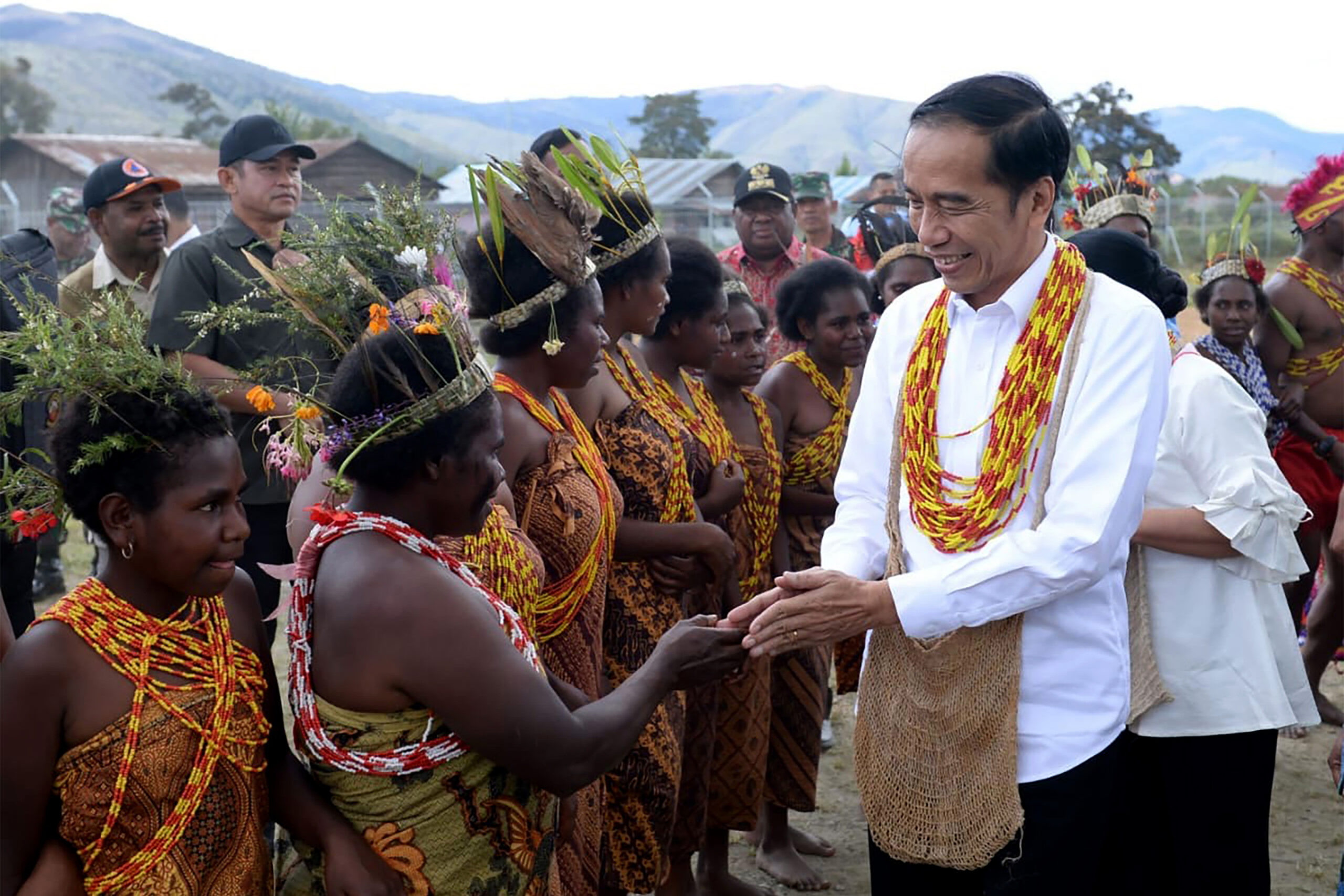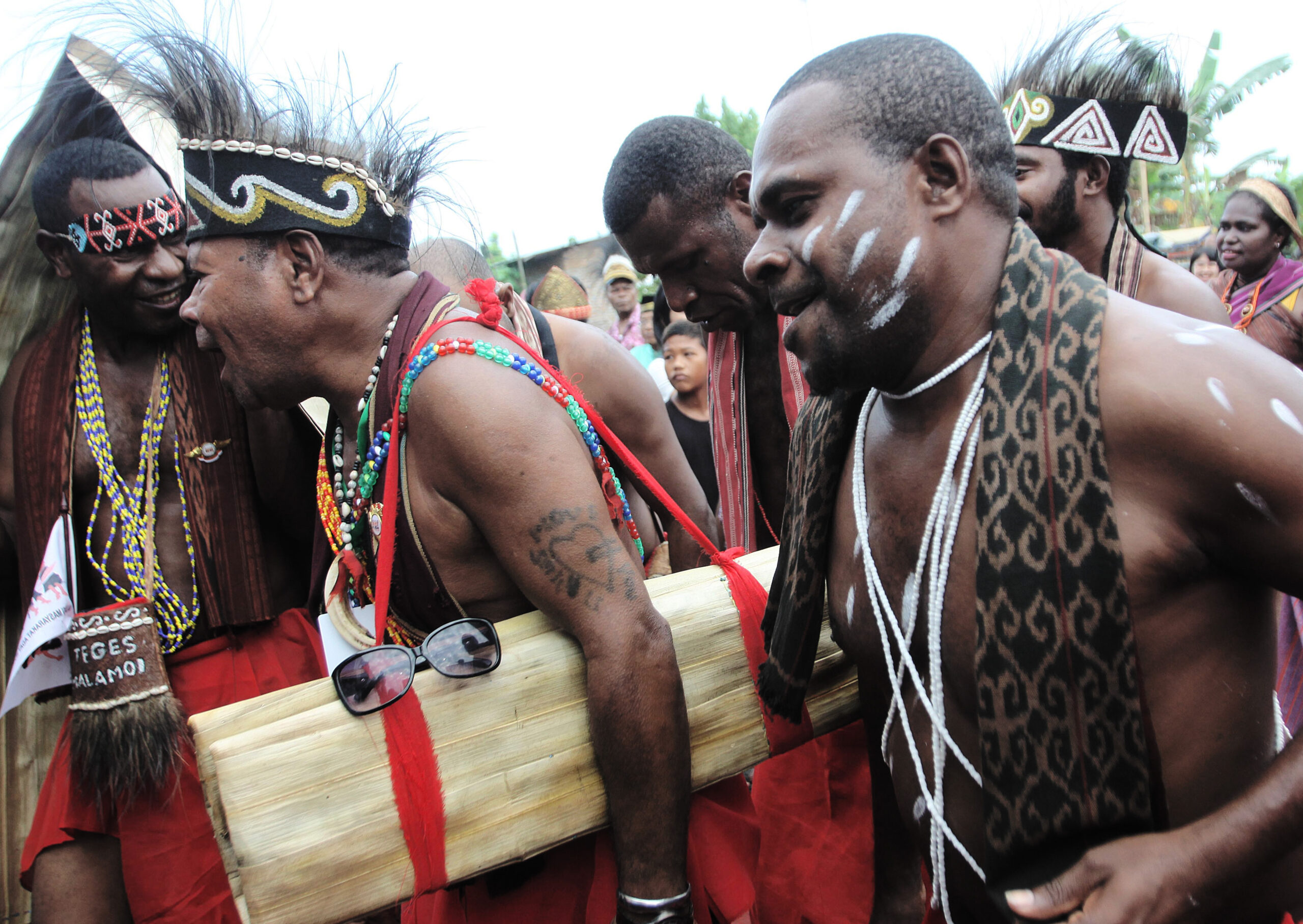When Reverend Benny Giay was a 14-year-old boy, he witnessed the Indonesian government take control of his homeland. Even at that age, he could sense he was witnessing a consequential moment for those living on the western side of the island of New Guinea, now an Indonesian province known as Papua.
Decades later, Giay’s unease continues as ethnic tensions have reached a boiling point in his hometown, Jayapura.
“On one hand, we have the Indonesian government that rarely listens to the indigenous Papuans,” Giay said. “On the other, we have problems arising from repressive acts by security forces against our people and the continuing inflow of Indonesian migrants. All of these are sources of conflict.”
Many view Papua as Indonesia’s most restive region as conflict between indigenous Papuans and Indonesian security forces has worsened.
Indigenous Papuan leaders have said they fear violence could be on the horizon and new research suggests those concerns could soon come true.
Mounting tensions between indigenous Papuans and Indonesian state security forces could result in increased violence and even “mass atrocities” over the next year and a half, according to a July report by the United States Holocaust Memorial Museum’s Simon-Skjodt Center for the Prevention of Genocide.
Our political elite in Jakarta have kept indigenous Papuans out of political decision making concerning their own land”
Made Supriatma, research fellow, ISEAS-Yusof Ishak Institute
The report spotlights the challenges Indonesia faces in responding to growing secessionist sentiments among indigenous Papuans.
Papua, Indonesia’s easternmost province, makes up the western half of New Guinea and other islands. Home to 4.3 million inhabitants, 2.3 million of whom are indigenous Papuans, the province has seen heightened mass protests and armed resistance since 2019.
The conflict has stemmed primarily from groups collectively known to Indonesians Organisasi Papua Merdeka (OPM), and as the Papuan Independence Organisation.
“Papua is Indonesia’s own time bomb, ready to go off at any moment,” said Made Supriatma, a research fellow at the ISEAS-Yusof Ishak Institute who authored the Holocaust museum report.
The researcher identified two worst-case scenarios in which mass violence could occur. Pro-Indonesia militias, aided by military and police, could target pro-independence Papuans, while Indonesian migrants together with Indonesian security forces could commit “atrocities” against indigenous Papuans, Supriatma said.
“Papua’s volatility today owes much to the history of its integration with Indonesia and the way our political elite in Jakarta have kept indigenous Papuans out of political decision making concerning their own land,” Supriatma explained.
Papua, which is divided into the provinces of Papua and Papua Barat, has a complex history.
Papua was not part of the new republic when Indonesia declared independence in 1945. The area remained under Dutch rule until 1962, when a U.S.-sponsored agreement transferred sovereignty to Indonesia.
Shortly after the agreement, Papua entered UN trusteeship until a 1969 referendum, the “Act of Free Choice, also known as PEPERA. The majority voted in favour of “integration,” sparking widespread frustration and anger among indigenous Papuans.
Like Giay, many Papuans at the time perceived the Act of Free Choice Law as far from democratic.
“It wasn’t a one-man-one-vote referendum in 1969,” Giay said. “The Indonesian government chose 1,025 tribal chiefs in our stead, who, under intimidation, voted for integration. How could it have been the will of the people?”

Second-class citizens
The immediate problem is the extension of the Special Autonomy Law, Giay said.
The Indonesian government granted Papua a 20-year Special Autonomy Status in 2001 to stem secessionist sentiments. But the law also divided the region into two provinces, causing further dissatisfaction among Papuans who believed they had not been consulted by the government.
Alongside the extension, the government plans to redraw the borders of the existing three provinces, Papua Selatan, Papua Tengah and Papua Pegunungan. A timeline for the change has not been determined.
“More provinces isn’t what Papuans need at the moment,” Giay said. “We have more pressing issues.”
Without consulting indigenous Papuan groups, the Indonesian government extended the Special Autonomy Law for 20 years in 2021, claiming further decentralisation would speed the region’s development. But the move has distressed indigenous Papuans further, Giay noted.
“The new provinces were in cahoots with very few indigenous elite Papuans, mostly government officials, but the majority of us are opposing it,” Giay said, noting that lack of consultation breeds division and many Papuans think they are viewed as “second-class citizens.”
Giay worries that splitting up Papua into more provinces will also lead to an increase in security personnel in the region. He recounted reports in which the largely non-Papuan Indonesian forces stationed in the region mistreated indigenous Papuans.
Papua has the highest number of security forces in Indonesia, with around 37,000 military or police officers stationed in the region since 2013. The state deployed one law enforcement officer for every 97 inhabitants, while the rest of Indonesia’s provinces see a ratio of one per 296 inhabitants.
Giay said he also worried corruption will rise as bureaucracy expands, but his greatest concern is the heightened risk of clashes between the military and pro-independence militias.
Indonesian military operations against pro-independence groups in areas including Nduga, Intan Jaya, Puncak Papua and others, displaced around 67,000 indigenous Papuans who fled their villages as fighting broke out in recent years, according to Giay.
“Fragmentation among indigenous Papuans will get worse when the new provinces are created because the new regions are demarcated along ethnic lines,” he said. “Economically, it can only lead to greater competition between indigenous people for access to the autonomy funds.”
Encouraging divisions
Academics who have studied Papua’s instability also view the new plans for the region as problematic.
Hipolitus Ringgi Wangge, a researcher at Australia National University, Canberra, questioned the political motive behind creating more provinces in Papua.
“Its goal isn’t devolution,” he said. “They want to encourage further divisions among indigenous Papuans who make up at least 261 ethnic groups. The aim is to weaken separatist aspirations.”
The plan is highly unpopular among indigenous Papuans. Over the past two years, protesters have met repression and violence from security forces including a 2021 fatal shooting of two civilians by security forces during a protest in Yahukimo, Papua Pegunungan, Wanggee said..
“The creation of new provinces will also be a magnet for more non-Papuan economic migrants to come pouring in, which will also stoke up tensions between indigenous Papuans and the Indonesian migrants,” Wangge said.
Papuans are ethnic Melanesians, like the inhabitants of the Maluku and Nusa Tenggara regions in Indonesia, neighbouring Papua New Guinea and Oceanic countries including Vanuatu and Fiji.

But the Papuan economy is now dominated by Indonesian migrants, with indigenous Papuans increasingly sidelined and left behind. This has fuelled enmity between the groups, Supriatma said.
“Indigenous Papuans living outside Papua are often ridiculed because of their skin colour, curly hair and diets,” he added.
Police shouted at Papuan students living in Java when they refused to raise the Indonesian flag to commemorate the country’s independence day in 2019. The incident triggered anti-racism protests in cities across Indonesia, including Papua.
Although the unrest may seem inevitable to some observers, Supriatma said he believes there are actionable courses that could minimise the violence.
The Indonesian government should do more to improve freedom of information in Papua by lifting entrance restrictions for journalists and researchers. This could allow indigenous populations to address local grievances and build trust, said Supriatma, who also hopes the government will remove the heavy security presence and consult with indigenous locals in its decision-making process concerning Papua.
A nonviolent approach to protests is also essential. Indonesian security forces dissolving pro-integration militias immediately is critical to peace, he said.
In Jayapura, Giay prayed for peace and said he hopes his people will be spared more suffering, even as potential violence simmers.
When dealing with Papua, the government should remember the second point of Pancasila, Indonesia’s state ideology, to act civilised and just, Giay said.
“True humanity can go a long way here,” he said.


